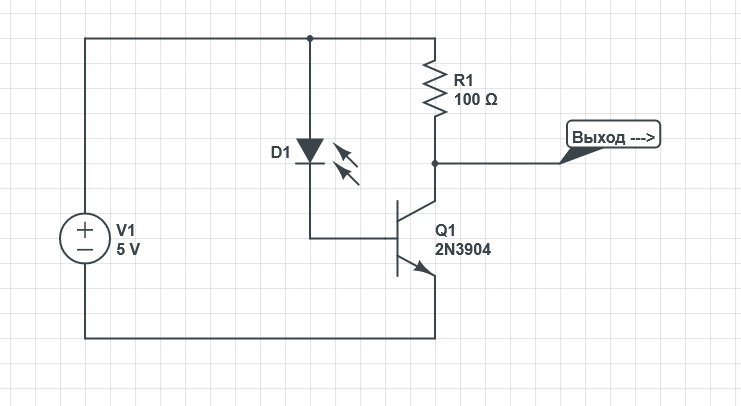Answer the question
In order to leave comments, you need to log in
How to invert a photoresistor?
Hello.
Interested in how you can reverse the signal. So that if, for example, 5 volts were supplied, then the output was 0 volts. If the input is 0 volts, then the output is 5 volts.
In this case, it is necessary for the photoresistor to reduce resistance in the dark, and not in the light.
Interested in a solution without microcontrollers and integrated circuits.
Answer the question
In order to leave comments, you need to log in

D1 - photoresistor (did not find a more suitable designation in the editor)
Ratings are conditional, do not pay attention to them.
The bottom line is that the stronger the transistor opens, the greater the voltage drop across the resistor in the collector and vice versa. If the transistor is completely closed - the output is 5 volts. If fully open - near zero (transistor saturation voltage).
You confused yourself and us with a very rough wording in the title, and then even more confused in the "body" of the question. I had to use telepathy.
Firstly, 0 and 5 volts is a binary, threshold gradation, and the photoresistor changes its resistance not abruptly, but smoothly. If it is threshold operation that is important to you, then you really cannot do without transistors (and other threshold devices).
Secondly, if you need to invert not a photoresistor (this is impossible), but only its output signal (albeit in a "smooth" non-threshold form), then no transistors are required . After all, the photoresistor does not work by itself, but as part of a voltage divider. This is the solution to your problem - you just need to flip this divisor:
If you highlight the photoresistor in option A, then the output signal will increase, and in option B it will decrease.
Didn't find what you were looking for?
Ask your questionAsk a Question
731 491 924 answers to any question